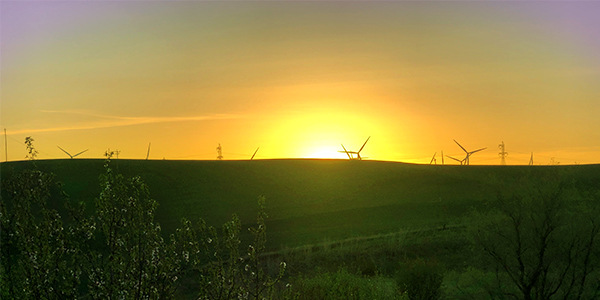California can reach its goals of providing retail customers with 100% clean energy by 2045 but will need to build renewable generation and storage resources at a record pace over the next quarter century to get there, a new report found.
Senate Bill 100, signed by Gov. Jerry Brown in 2018, set the state’s clean energy target and required an initial progress report, which was released Monday and presented to the California Energy Commission (CEC) on Wednesday. The 178-page report was the product of a joint effort by the CEC, the California Public Utilities Commission (CPUC) and the California Air Resources Board, with modeling and analysis performed by energy consulting firm E3.
CEC Chair David Hochschild said the analysis made it clear that California can achieve what many had widely dismissed as unrealistic.
“We’re in a moment where what was previously considered mythology — the vision of getting to 100% clean energy — just a couple of years ago … is now law in 17 states, and it’s President Biden’s energy goal for the United States,” Hochschild said. “California can take great credit for being a part of driving that vision forward, and this report will be an important milestone.”
Meeting the mandates of SB 100 will require a massive undertaking costing billions of dollars, the analysis determined. The state will need to nearly triple its solar and wind resources along with an eightfold increase in battery storage, it found.
The biggest increase must be in utility-scale solar, the report said. The state had 12.5 GW of large solar arrays in 2019 but needs 69.4 GW by 2045. Customer solar such as rooftop arrays will need to increase from the current 8 GW to more than 28 GW in the same time frame, it said.
Battery storage is regarded as key to maintaining the reliability of a grid largely dependent on unpredictable renewable resources. The negligible amount of battery storage now connected to the grid must grow to nearly 50 GW by 2045, the report found. The analysis envisions a relatively small increase in long-duration storage such as pumped hydropower.
It projects more than doubling onshore wind from 6 GW to 12.6 GW and adding 10 GW of offshore wind, which currently does not exist and will likely prove controversial in California.
The buildout rate dwarfs state efforts so far. “Over the last decade, California has built on average 1 GW of utility solar and 300 MW of wind per year, with a maximum annual build of 2.7 GW of utility-scale solar and 1 GW of wind capacity,” the report said. The state may need to add an average of 6 GW of new renewable resources and storage annually to meet its goals.
The effort will add at least $4.5 billion to the annual cost of electricity by 2045, it said.
The cost will be offset by social benefits such as cleaner air and better public health along with thousands of jobs in the manufacturing and installation of wind and solar resources and in the development of new clean energy technologies, the report stated.
“Achieving 100% clean electricity by 2045 is not only a bold pursuit, but a wise one,” CPUC President Marybel Batjer said in a statement. “Such action is required to avoid the worst impacts and costs of climate change and to ensure the delivery of safe, affordable, reliable and clean power to all Californians.”


